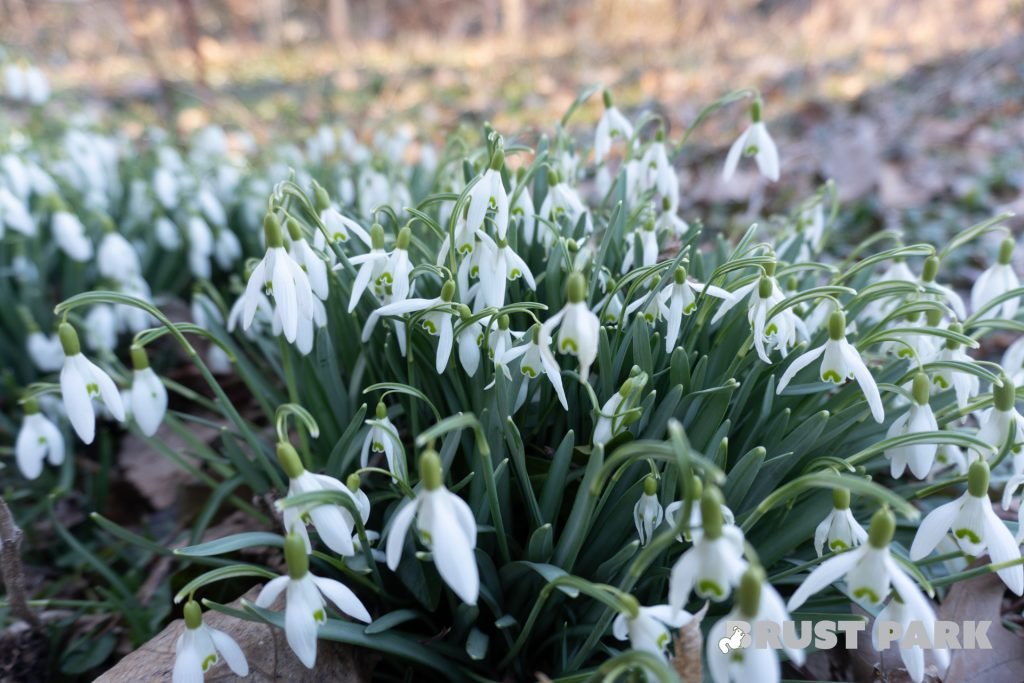
As the frosty grip of winter begins to loosen, Brust Park, nestled in the heart of New York City’s Bronx, becomes the stage for one of nature’s most delicate performances—the blooming of snowdrop flowers. These dainty harbingers of spring offer not just a visual treat but also a fascinating story of resilience and beauty. Let’s delve into the world of snowdrops and discover why their appearance is so eagerly anticipated by nature enthusiasts and casual park visitors alike.
What Are Snowdrops?
Snowdrops (Galanthus nivalis) are among the first flowers to bloom at the end of winter, often pushing through the snow to share their blooms. These small, white flowers are easily recognized by their drooping bell-shaped flowers, each with six petals. The inner petals have distinctive green markings, which are unique to the species and contribute to their delicate beauty.
When Do They Bloom?
In Brust Park, snowdrops typically make their debut in late winter to early spring, often as early as February and continuing into March. Their blooming is a herald of spring, signaling that warmer days are just around the corner. The exact timing of their appearance can vary depending on the winter’s severity and the ground’s temperature.
Interesting Facts About Snowdrops
- Symbol of Hope: Snowdrops are often seen as a symbol of hope and purity. In folklore, they are associated with the ability to overcome challenges and hardships, much like they push through the snow to bloom.
- Honeybees’ Early Friends: These flowers are crucial for honeybees, providing one of the first pollen and nectar sources of the year. In doing so, they play a vital role in supporting early pollinators, who depend on these resources for survival.
- Galantamine Source: Snowdrops contain galantamine, an alkaloid used in the treatment of Alzheimer’s disease. This makes them not only a symbol of beauty and renewal but also a plant of significant medicinal value.
- A Protected Species: In some areas, snowdrops are protected under conservation laws, prohibiting the collection of wild snowdrop bulbs. This protection highlights the importance of preserving natural beauty and biodiversity for future generations.

Snowdrops in Brust Park: A Sight to Behold
The blooming of snowdrops in Brust Park is a gentle reminder of nature’s cycles and the promise of renewal. As visitors stroll through the park, they’re greeted by clusters of these white blooms, dotting the landscape with spots of brightness against the lingering snow. The sight is not just a visual feast but a call to pause, reflect, and appreciate the small yet profound transformations in the natural world.
For those looking to experience this spectacle, it’s best to visit Brust Park during the peak blooming period in late February and early March. Remember, while enjoying the snowdrops, to respect their habitat by staying on designated paths and not picking the flowers, ensuring they can be enjoyed by everyone and continue to thrive in their natural setting.
As we anticipate the return of these enchanting flowers each year, let’s embrace the lessons they offer—resilience, hope, and the beauty of new beginnings. The snowdrops of Brust Park are a true testament to the wonders of nature, inviting us all to witness the awakening of the earth.